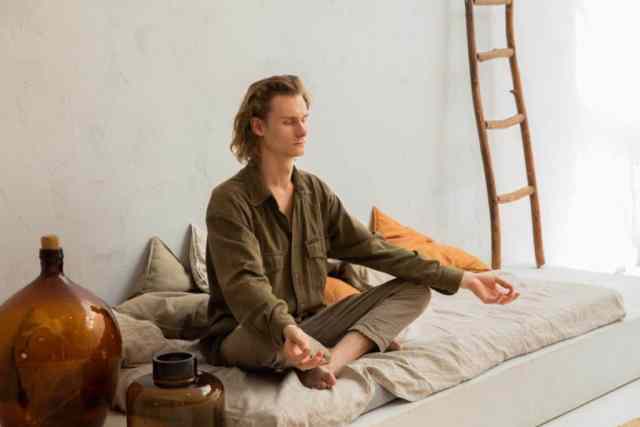There are many myths and information about yoga that can be confusing to a newbie.
There are many different things you can learn about yoga. Some may be more true than others. With time, you will hopefully slowly grasp this guide, but there’ll be a lot of misinformation which can lead you astray from reality.
You may come across eleven myths about yoga in your analysis. You can learn to tell what is true and what is not by figuring out the truth about these myths.
If you want to learn more about yoga myths and misconceptions, you will love Judith Hanson Lasater’s newest book ‘Yoga Myths’: What you must study and unlearn for a safe and healthy yoga practice’.
Yoga is only for women 2 3. Yoga is only for women 3 3. Yoga is not a workout 4 4. Yoga is not a religious follower 5 5. Asanas are all there is to yoga 6 6. Stretching is all that yoga is 7 7. Yoga is only for the young 8 8. Yoga 9 requires that you are slim. Yoga is more difficult the extra advanced the poses are 10 10. All yoga is the same 11 11. Everyone will decide on me in the yoga class
Yoga requires versatility.
This is one of the most common misconceptions I’ve heard about yoga.
This is the most common phrase I hear from people who are not experienced with yoga.
If I could go back just a few years, I would have said that to the yoga instructor of my sister:
“I’d love to do yoga but I’m not flexible enough”
It’s ironic that I am now the yoga instructor and people are telling me the same thing!
Yoga includes a wide range of physical postures. Many of these postures help us to improve our strength and flexibility.
If I were to search Instagram for the word ‘yoga,’ then the majority of pictures would be of people demonstrating some beautiful looking advanced yoga poses which require a fair amount of flexibility.
Yoga is now a popular concept among many people.
In a typical class of yoga, we focus on the breath as well as a few poses that will help improve flexibility and starting. Some people are more flexible than others. Yoga can help some people improve their flexibility. Some people could.
The important thing is to begin with what we have, regardless of whether it’s flexible or not. Perhaps more important is having a flexible mindset and being open to where this yoga journey can take us.
- Women only? Not at Yoga
In any yoga class, you’ll probably find more women than men. I have practiced yoga all over the world. Courses range from being entirely female to having a 40/60 male to female ratio.
It is understandable that many people believe that yoga is only for women because of the majority of females in any yoga class.
But, it seems that a few decades ago, in India, only men were taught yoga.
In the Thirties, two women were accepted to study yoga, and both, in their own way, broke the gender barrier.
You may also like this article: Do men follow yoga?
Yoga underwent a transformation after it reached the West. It developed a more female-focused image. It is important to stress that yoga is suitable for everyone.
I have taught Ashtanga classes where I had only male students! The type of yoga that is practiced could have an impact on the ratio between men and women.
- Yoga is not an exercise
On the one hand, I do agree with that statement. Yoga isn’t the same as going to a gym.
Nevertheless…
Yoga is ALSO an exercise.
Let’s take Ashtanga and Vinyasa specifically. Each form of yoga can be physically demanding. They all place a strong emphasis on asanas and are appealing to people who also want a workout.
There have also been a number of studies that have shown how both forms of yoga can help build power. One study conducted in the US in 2004 found that Ashtanga Yoga could be able to increase core strength and upper body power.
Two teams were formed. The first group did Hatha Yoga, while the second practiced Ashtanga. Each team did 75-minutes of follow twice a week for six consecutive weeks.
The results showed that both groups had improved core strength and increased body power. It’s not surprising that Ashtanga yoga has shown better outcomes, given its more physically demanding practice.
Yoga is not just an exercise but can certainly be one!
- Yoga is not a secular practice
This is a bit of a controversial topic.
Over the years, I’ve heard from a few yoga students who have asked me if yoga is a religion. Some even told me they didn’t tell their spiritual parents that they were going to yoga to avoid upsetting them.
In the West, there are some Christians and Jews who are unsure if yoga is part of a easter religion. In turn, they are concerned that practicing yoga could undermine their own religion.
Georg Feuerstein, a yoga expert and author of The Deeper Dimensions Of Yoga argues that yoga can help deepen a person’s personal faith.
This is what he does to help:
All types of Yoga are based on the belief that we haven’t reached our full potential. Yoga is a practical non-spiritual discipline that emphasizes personal experimentation and verification. In other words, personal experience or spiritual realization is considered superior to any theory or conceptual system.
He then continues to say:
Yoga has, and continues to be practiced by people with a wide range of philosophies and religious beliefs. Yoga practitioners have different beliefs. Some believe in a personal God who created everything, while others prefer a metaphysics which views the world as an illusion and the ultimate Reality as singular and without form. Some Yoga practitioners are more spiritual than others. Yoga is used to explore the human spirit, the body and mind.
- Asanas are the basic movements of yoga
Yoga is not a myth, but a misconception that has some truth to it.
Yoga asanas will be all that you see if you search for yoga poses on Instagram.
Asanas are a part of yoga, but they’re not all that it is. Yoga is not just about the physical aspect.
Let’s go back a little and look at some yoga philosophy to get a bigger picture.
Patanjali is the author of the Yoga Sutras. These are also known as The Yoga Sutras by Patanjali.
The texts are believed to be foundational texts in classical yoga philosophy. They were written in Sanskrit approximately 2000 years ago.
Yoga practitioners can use the eight limbs as a guide to help them progress and achieve a state called Yoga or self-realization. The eight limbs include:
Yamas is our way of life and our habits.
Niyamas: Self-discipline, non-secular observances
Asana is the yoga postures.
Pranayama – breath management
Pratyahara is a form of withdrawal or sensory transcendence
Dharana – focus
Dhyana – meditation
The state of ecstasy is called Samadhi.
As you can see, Asana is only a small part of yoga.
- Stretching is the essence of yoga
Stretching can be excessive in yoga!
It’s not surprising that I hear this a lot when I tell people I teach yoga.
Yoga is so much more than just stretching.
Yoga’s physical practice involves a lot of stretching. This means that you will see a long-term improvement in your flexibility. Yoga can provide many benefits, but this is just a fraction of them.
These are the conditions that can make a yoga class more ‘full.’
Stretching
Strengthening
Respiration
Gaze/Focus
Philosophical Terms
You may also like this article: Is Yoga Just Stretching?
- Yoga is only for younger people
This is a wrong impression I would like to dispel about yoga! I have taught yoga classes where the average age was around 50. What a wonderful class!
Yoga can be practiced at any age.
As we age, our bodies may also need more grounding. But that does not mean that you have to be young to practice yoga.
If you’re looking for some extra inspiration, check out this interview with Tao Porchon Lynch, the oldest yoga trainer in the world.
- Yoga is only for the skinny
I still remember the day. I was cleaning up my studio after a class when a young girl walked in.
She was close to the front door, so I moved closer to her.
She asked me in a timid voice if she could do yoga.
In fact, I did mention it!
She asked, “Even for someone like me?”
She was talking about her weight.
My heart dropped.
After a brief discussion, she decided to give yoga a try.
It was one of my most beautiful experiences as a yoga instructor to see her attend class every day and gain strength, flexibility, and, more importantly, confidence.
Take a look at the newbie yoga class of Jessamyn Stanly, who is both attractive and inspiring.
- Yoga is a sport of poses. The more advanced the pose, the better you are at it.
This is a common perception of yoga, especially among those who are inexperienced.
It is a smart move, to be honest.
You may be a yoga novice who hasn’t worked out in ages, or even ever.
Maybe you feel a little self-conscious when you walk into a yoga class?
When you search, you get a glimpse of the current category. There are people who have been practicing Ashtanga Yoga in Mysore for more than a decade.
You can see them do headstands, backbends and soarbacks. Some of them even put their leg behind the head!
You may think that they are much better at yoga compared to you.
Yoga is an inner practice. “The rest is circus.”
Sri Okay Pattabhi Jois
This is a script I wrote because I experienced this exact experience.
When I first walked into the class with my instructor in India, I saw a sea full of yogis who were doing the most amazing things with their bodues.
After some time, I began to recognize the best yogis.
Then, it was whose bodies could do the unimaginable.
The people who were calm and relaxed throughout the practice, as if they were reading a book while drinking a warm cup of tea.
That was my eureka moment.
- All Yoga is the Same
When you first enter the world of yoga, you will quickly discover that there are a lot of choices of yoga available.
There are certain to be two or more that will appeal to the majority of people.
Yoga can vary in terms of how dynamic, how light, for whom it is geared, and the physical benefits.
You’ll leave the category with a feeling of heightened energy and relaxation.
Take your time and explore all the different types of yoga. You will quickly understand the differences and find the type of yoga that you resonate with.
The most common yoga styles in studios today are:
Hatha – A Hatha class can be a great place to start for yoga beginners. The instructor guides the class in a slow-paced manner, which allows the students to move out and into postures safely.
Vinyasa – A Vinyasa class could be seen as a extra quick paced Hatha yoga class. This type of class involves students moving in and out of postures with their breath. The Vinyasa classes can be both enjoyable and physically challenging.
Ashtanga Ashtanga can be viewed as a more structured Vinyasa. Every class uses the same set of postures, which become increasingly difficult as we progress. The focus is also on the breath, posture and gazing levels of each posture. Ashtanga is a great practice for anyone who has a lot of thoughts because it clears the mind.
Yin Yoga – This is a completely different practice. It is a very slow and grounding practice. The aim is to stretch out the connective tissues. We can hold each pose for several minutes. This makes Yin Yoga a great practice for anyone who wants to work on their flexibility and release any built up rigidity.
Restorative Yoga – This is an extra relaxing approach to yin. Yoga props are used (bolsters blankets clocks, eye pillows, and blankets). This follow is all about relaxing and we say that you can stay in each pose for up to 20 minutes.
You can watch my video to get more information about each of these:
- Everyone will decide on me in the yoga class
This is more of a concern for me than a false perception about yoga.
It’s a question I get asked a lot by people who want to begin yoga but prefer private classes.
What I tell them is this:
Many people are so absorbed in their own yoga expertise that they may not even notice you!
Think about it!
Yoga classes are a great way to discover what your body is capable of, as well as the limitations and injuries you may be experiencing.
We may be having a conversation about our bruised or inflated ego. We may be concentrating on breathing after a stressful day at work, or we are calming down our minds.
Is there enough time to take note of the person who is following me? There’s someone new here, sure.
Is it time to gauge? Most likely no.







